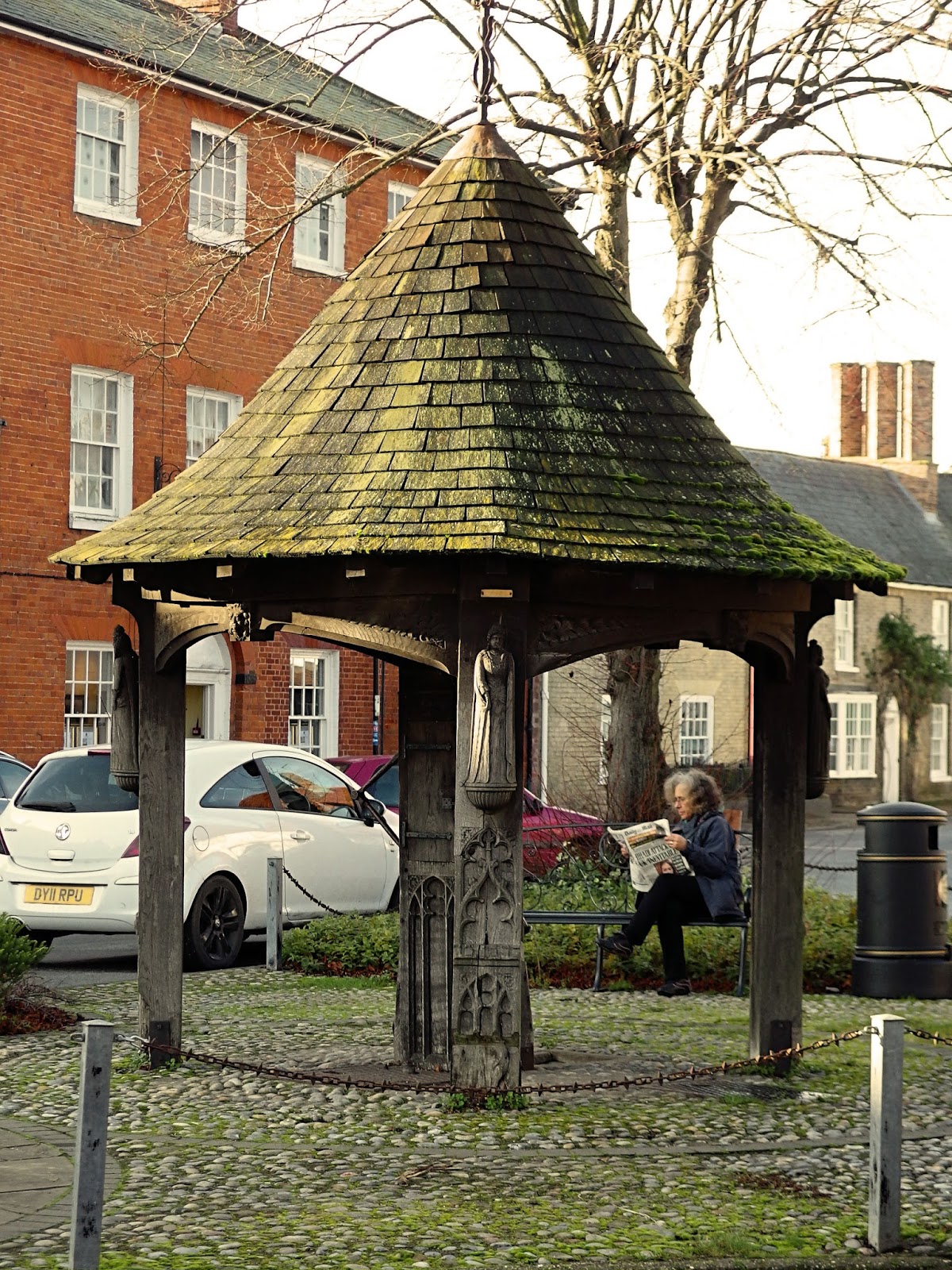Not far from Stowmarket in Suffolk is the busy little village of Woolpit. Today we're going to have a quick look around the village and, as we do so, I'll tell you the tale about the Green Children of Woolpit.
But first you'll be wanting to know how the village got its peculiar name. Although wool was important hereabouts in the fifteenth century, the name pre-dates the wool trade. The usual explanation is that it comes from Wulf pytt meaning "wolf pit" and that it is the site of the trap where the last wolf in these parts was killed. A nice explanation though surely there would have had to be lots of wolf pits to exterminate the wolves which once roamed the land, but there's only one place in all England called Woolpit (or anything like it). The local history society in the village believes that it gets its name from Ulfketel, a famous local warrior and counsellor at the court of Ethelred the Unready in the tenth century.
Now, about those green children....
Back in the reign of King Stephen (1135-1154), or perhaps King Henry II (1154-1189), so the story goes, the men of Woolpit were busy gathering in the harvest when they came across two strange children, a boy and a girl. They wore odd-looking clothes, spoke an unintelligible language and, most remarkably, their skin was green.
The men tried to feed the children but they would eat nothing. The children were taken to the manor of Sir Richard de Calne who was equally baffled by these peculiar children. After several attempts to get them to eat, it was discovered that they would eat beans but nothing else.
The girl gradually became more healthy and began to eat other foods and slowly her green skin took on a more normal hue. The boy, on the other hand, became sick and died. In time the girl learned to speak English and told how she and her brother came from a land of constant twilight where everyone was of a green colour. One day the children were following their flocks when they came to a cavern which they entered. Inside there was the sound of bells which they followed until they came out into a blinding light. They were terrified but could not find their way back into the cavern and so they were caught by the reapers as they gathered their harvest.
The girl grew into a beautiful woman, "though rather loose and wanton in her conduct", and married a man from Kings Lynn. She went under the name of Agnes Barre and some say that her husband was an ambassador in the court of Henry II. There are also said to be people in Woolpit to this day who are her descendants, but nobody will admit who they are.
The tale turns up in the writings of Ralph of Coggeshall and William of Newburgh, who both wrote within a hundred years of these unlikely occurrences, so it seems the story was widespread. But could there be an element of truth in it?
The green skin colouration might be due to chlorosis, a form of anaemia which was quite common amongst undernourished and overworked children as recently as the nineteenth century. It certainly could affect someone who lived on a diet of nothing but beans. As their diet improved the colouration would have faded.
The strange language which the children spoke could mean that they were Flemish, as Flemish mercenaries were active in the area at that time, but equally it could just be a reflection of the wide variety of local dialects which flourished at that time.
Many people over the years have come up with all kinds of outlandish explanations for the story, involving the bells of Bury St Edmunds abbey, the flint mines at Grimes Graves, Thetford Forest, the Babes in the Wood story (which took place miles away in Norfolk) and more recently parallel universes and space travel. My own explanation is just that they were two poor children who were either lost or abandoned. Take your pick....
....and take care!










Either way it's a great story :)
ReplyDeleteLovely tale, John, told in great style, I take it there's no pub?
ReplyDeletefascinating..lots of lovely photo tidbits, too
ReplyDeleteI'd never heard of chlorosis or green people so this post sent me off on a Google search to find out more.
ReplyDeleteDoes make a great basis for a folk tale.
As tempting as it is to believe one of the more outlandish theories, the space travelers is particularly appealing :) I think your conclusion is probably spot on John :)
ReplyDeleteYep, I'm going with the space alien theory.
ReplyDeleteI like the space alien theory, but I suspect they were malnourished children with green-hued skin. I googled "chlorosis" and then checked images and saw a painting depicting such a hue. I love learning something new. Thank you!
ReplyDeleteCheck out this Vermeer. Wow!
ReplyDeletehttp://www.essentialvermeer.com/catalogue/lady_standing_at_a_virginal.html#.VHtBPYcZTfk
What an interesting tale. I enjoyed reading it and also looking at your photos of this cute village.
ReplyDeleteVery interesting story and lovely photos. They show another beautiful village. Thanks for visiting John, and please, by your comment, don't ever grow up, keep that inner child going that I am always talking about :)
ReplyDeleteIt's a colorful little village and its windows have such character. The theories about the children are fun to ponder.
ReplyDeleteWhat a fascinating story about the green children and also what a pretty village. Plenty of intriguing doors and windows for you to photograph:)
ReplyDeleteVery interesting story - fantasy "literature" existed then as now.
ReplyDelete